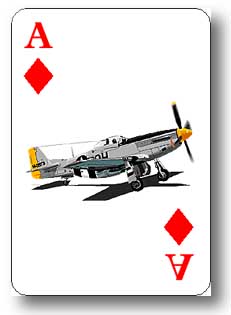|
111th Reconnaissance Squadron
World War II Narrative History
Part XII: Ace
 The end of the war in Europe left First
Lt. Valentine S. Rader, Howard, Kansas, with the distinction of being the Snoopers' one
and only combat ace. The end of the war in Europe left First
Lt. Valentine S. Rader, Howard, Kansas, with the distinction of being the Snoopers' one
and only combat ace.
Lt. Rader came overseas in September, 1944, and
joined the squadron in southern France, remaining until after the close of the European
war. During this period the German Air Force presented its final all-out effort and by the
time our missions were flying almost entirely over German territory, Luftwaffe fighters
were roaming the skies in strength seldom less than eight in number, making it
particularly hazardous for our two-plane reconnaissance flights.
Although the primary mission of our pilots was to
observe for enemy movements, activity and installations, and they were free to avoid as
much as possible any encounters with the Luftwaffe, there were none who refused to accept
a challenge and there were many who dared to challenge the enemy; on many occasions
against overwhelming odds.
Lt. Rader was among those who dared, beginning with
his first encounter with the enemy on February 22, 1945, when he and Lt. Walker J. Vetter
challenged two separate flights of twenty ME-109's each. He emerged from a merry mix-up of
split S's, luftberries, loops, rolls and dives without damage to his own plane and a claim
of 3.5 ME's destroyed. He passed the required number of five to become a combat ace with
two more claims on April 7, and added one more to run his total to 6.5 on the 10th of
April. During operations with the squadron, Lt. Rader flew 80 missions, totaling more than
160 combat hours; was awarded the Distinguished Flying Cross, the Silver Star, and Air
Medal with seven Oak Leaf Clusters. He entered service at Kansas City in April, 1942,
received primary training at Sikeston, Mo., and basic training at Strother Field,
Winfield, Kansas.
Previous Article |
Directory Contents |





